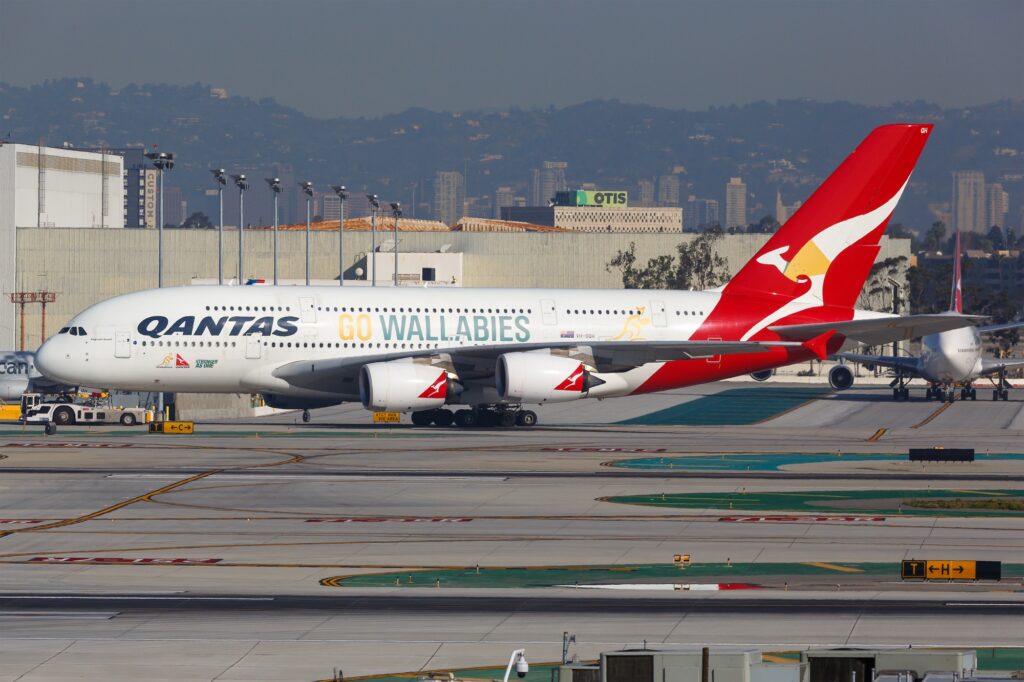Qantas has announced that it plans to add another Airbus A380 to its network by the end of 2023.
The Australian airline will be undertaking a significant expansion of its international network starting from October 2023, adding over one million scheduled seats over 12 months compared to its current flight network. Qantas emphasized that the additional capacity will be added on the back of the airline restoring aircraft, new aircraft joining the fleet, and “an arrangement with oneworld partner Finnair to operate two Airbus A330 aircraft on two Qantas routes”.
Qantas returning Airbus A380 aircraft
In January 2023, Qantas reactivated one Airbus A380 aircraft, while an additional aircraft of the type will return to service after it has gone through maintenance and the modification of its cabin. Currently, the airline operates seven Airbus A380s, while three, namely VH-OQA, VH-OQC, and VH-OQI, are in maintenance, according to ch-aviation.com data.
Previously, Qantas said that Maintenance, Repair, and Overhaul (MRO)-related slot constraints are delaying the return of the remaining aircraft “through to early 2025”.
Six aircraft of the type that are owned by the airline are configured in a 485-seat layout, consisting of 341 Economy, 40 Premium Economy, 70 Business, and 14 First Class seats. Meanwhile, the other four A380s are configured with 484 seats, with 371 Economy, 35 Premium Economy, 64 Business, and 14 First Class seats, according to ch-aviation.com data.
The airline plans that capacity between Melbourne Airport (MEL) and Los Angeles International Airport (LAX) will increase by around 60% due to the Airbus A380 being deployed on the route. Capacity between Sydney Airport (SYD) and Hong Kong International Airport (HKG) should grow by more than 50% during the peak Australian summer travel period, with Airbus A330 and A380 aircraft flying between the two airports daily.
By March 2024, the international capacity of Qantas Group, taking in Qantas and Jetstar, will almost be the same as it was prior to the breakout of the COVID-19 pandemic. The Australian carrier hired 2,400 pilots and cabin crew to facilitate the upcoming growth of its flight network.

